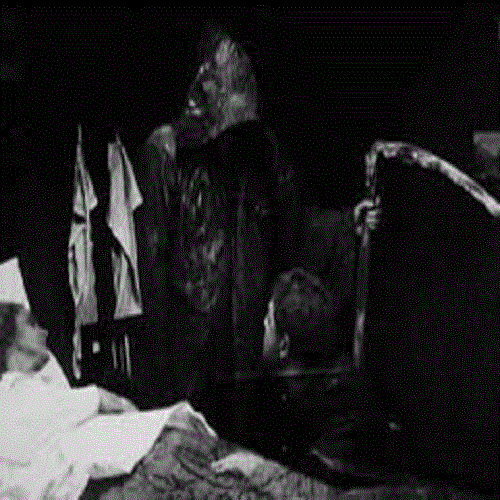“The fear of death is the most unjustified of all fears, for there’s no risk of accident for someone who’s dead” – Albert Einstein

On April 8, 1826, an 83 year old horse trader named George Talkington of Uttoexter in Staffordshire, England died of old age, outliving his first wife and all eighteen of his children (although his second wife, who he married at 74 may have survived him). What’s novel about Mr. Talkington is not that he died, rather the strange litany of things that didn’t kill him across eighty-three years. He appears to hold a record for surviving more potentially fatal accidents than almost any other human being.
Up to the year 1793 they were as follows: Right shoulder broken; skull fractured, and trepanned; left arm broken in two places; three ribs on the left side broken; a cut on the forehead; lancet case, flue case, and knife forced into the thigh; three ribs broken on the right side; and the right shoulder, elbow, and wrist dislocated; back seriously injured; cap of the right knee kicked off; left ankle dislocated; cut for a fistula; right ankle dislocated and hip knocked down; seven ribs broken on the right and left sides; kicked in the face, and the left eye nearly knocked out; the back again seriously injured; two ribs and breast-bone broken; got down and kicked by a horse, until he had five holes in his left leg; the sinew just below the right knee cut through, and two holes in that leg, also two shocking cuts above the knee; taken apparently dead seven times out of different rivers. Since 1793, (when a reference to these accidents was given to Mr. Madely, surgeon, of Uttoxeter,): right shoulder dislocated and collar-bone broken; seven ribs broken; breast-bone laid open, and right shoulder dislocated; left shoulder dislocated, and left arm broken; two ribs broken; and right thigh much bruised. In 1819, then in his seventy sixth year: a lacerated wound in the calf of the leg, which extended to the foot, mortification of the wound took place, which exposed all the flexor tendons of the foot, also the capsular ligaments of the ankle joint; became delirious, and so continued upwards of three weeks: his wonderful recovery from this accident was attributed chiefly to the circumstance of a friend having supplied him with a quantity of old Madeira, a glass of which he took every two hours for eight weeks, and afterwards occasionally. Since then, in 1823, in his eightieth year he had a mortification of the second toe of the right foot, with exfoliation of the bone, from which he recovered, and at last died from gradually declining old age (Hone, 1860, p127).
Talkington was involved in “breaking” horses (training young horses to put up with human nonsense like letting us ride them), which is no doubt a dangerous occupation, from which one might expect a certain number of injuries. This is why I found it a little puzzling that he had also “been taken apparently dead, seven times out of different rivers” (Kirby, 1820, p126). I would avoid rivers, at least after the first two times. We’d be similarly hard pressed to call Mr. Talkington “lucky”, apart from the whole not dying thing, although one suspects he spent a great deal of his eighty-three years in agonizing pain. Talkington must have lived his life without fear, repeatedly getting “back up on the horse”, literally and figuratively after each body-shattering accident. As poet William Congreve observed, “Fear comes from uncertainty. When we are absolutely certain, whether of our worth or worthlessness, we are almost impervious to fear”. Knowing that each time he left the house, odds are that he would be maimed, drowned, or otherwise brutalized by the fates, Talkington must have had a smile on his face and somewhat jagged spring in his step. When horrible wounds just keep on coming and you recover from every single one, why worry?
References
Hone, William, 1780-1842. The Table Book of Daily Recreation And Information: Concerning Remarkable Men And Manners, Times And Seasons, solemnities And Merry-making, [etc.] On the Plan of the Every-day Book And Year Book,[etc.] Forming a Complete History of the Year And a Perpetual Key to the Almanac. London: W.Tegg and Co., 1860.
Kirby, R. S. Kirby’s Wonderful And Eccentric Museum; Or, Magazine of Remarkable Characters. Including All the Curiosities of Nature And Art, From the Remotest Period to the Present Time, Drawn From Every Authentic Source. Illustrated With One Hundred And Twenty-four Engravings. Chiefly Taken From Rare And Curious Prints Or Original Drawings. London: R. S. Kirby, 1820.
Thanks for another fascinating post, Esoterx.
Talkington’s recuperative powers were truly phenomenal. If there is any chance of exhuming his remains for scientific study it could be well worth the effort and expense. I call upon researchers at Oxford or Cambridge to undertake this project while there’s still a chance of retrieving a useable DNA sample.
In the meantime I hope to begin a long term study of the medicinal effects of old Madeira if I can get my primary care physician to write a prescription for it that will be accepted by my drug plan.